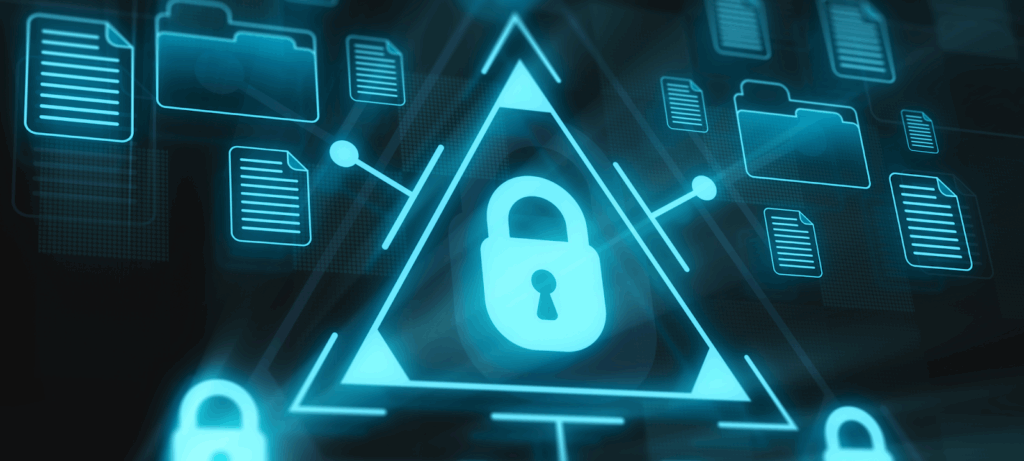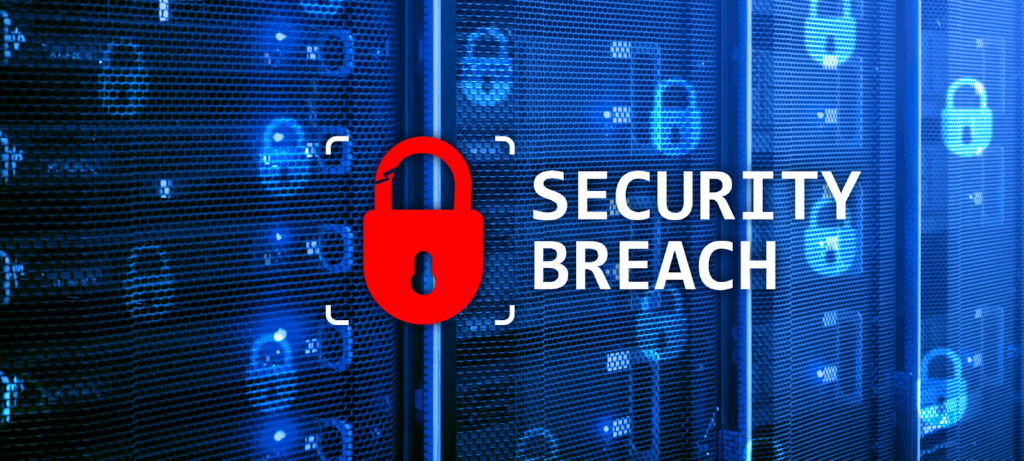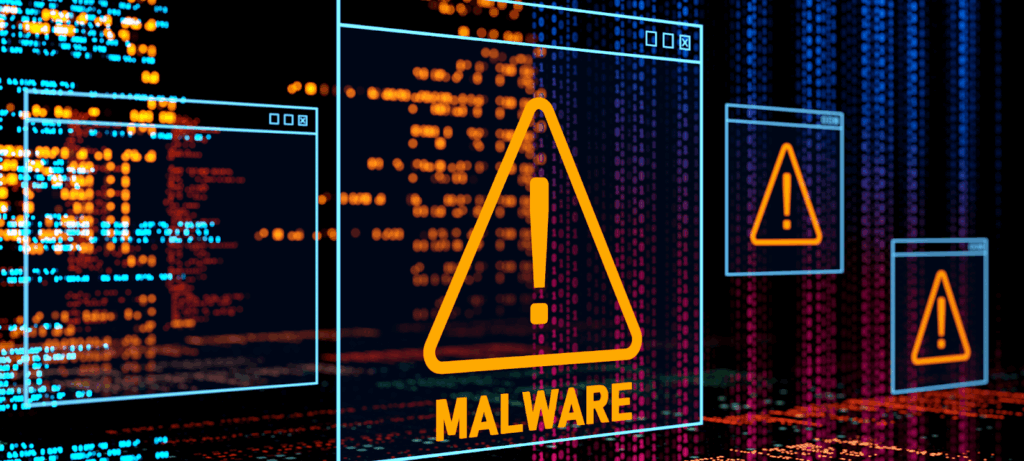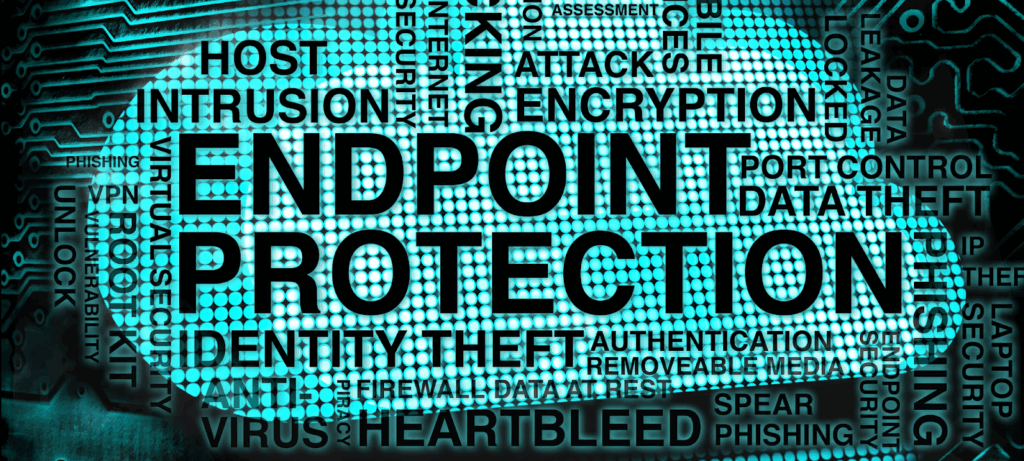
The Reality of Cyber Attacks Today
Cyber attacks are no longer isolated events—they’re an everyday threat for businesses of all sizes. From ransomware and data breaches to sophisticated supply chain compromises, the scale and frequency of attacks have surged in recent years.
Organizations face not just technical damage, but operational, financial, and reputational consequences when systems are compromised.
Cybercriminals are evolving their methods faster than many businesses can respond.
Whether it’s exploiting outdated software, targeting unsuspecting employees with phishing emails, or infiltrating vendor systems, attackers constantly seek vulnerabilities to exploit. This has placed cyber recovery at the forefront of modern risk management.
Without a well-structured cyber attack recovery plan, businesses risk extended downtime, data loss, and even permanent damage to customer trust.
Preparing for an attack is no longer optional—it’s a core requirement for maintaining business continuity in an era where cyber threats are relentless and constantly evolving.
Understanding the Nature of Cyber Threats
Modern cyber threats are increasingly diverse and complex.
From malicious software planted through phishing emails to supply chain attacks that exploit third-party vendors, today’s threat landscape spans far beyond traditional viruses and malware.
Cybercriminals often use a combination of tactics to bypass security measures, such as downloading malicious files disguised as legitimate documents, or exploiting outdated software that hasn’t received recent security patches.
Once inside a system, attackers can move laterally, escalate privileges, and exfiltrate sensitive data—often undetected until it’s too late.
Threats aren’t always external, either. Internal threats—such as disgruntled employees, poor access control, or negligent data handling—are a major factor in many security breaches.
Combined with the growing risks tied to critical infrastructure (like power, healthcare, or finance), the consequences of a breach can extend far beyond data loss into public safety and economic disruption.
A robust understanding of both external and internal cyber risks is foundational for designing an effective cyber resilience strategy—one that not only defends against attacks but also enables rapid recovery and sustained operations when incidents occur.
The Business Impact of Cyber Attacks
When cyber attacks strike, the consequences go beyond IT disruptions—they ripple across the entire organization.
For many businesses, the most immediate effect is downtime. Systems go offline, business operations stall, and customers may be left without access to services or support.
In industries with critical infrastructure, even brief interruptions can have serious safety and economic consequences.
Financial losses quickly mount from lost productivity, incident response, legal fees, regulatory fines, and in some cases, ransom payments.
In the aftermath of high-profile data breaches, companies often face lasting reputational damage that impacts customer trust and investor confidence.
Additionally, businesses must contend with compliance obligations tied to the handling of sensitive data.
A successful attack can trigger audits, lawsuits, and mandatory reporting to regulatory bodies—especially when financial data or personally identifiable information (PII) is compromised.
Perhaps most concerning is the long-term erosion of an organization’s security posture.
Without a strong cyber recovery plan, companies may find themselves vulnerable to future incidents, struggling to recover not only their systems but also their strategic momentum and market position.
Effective cyber resilience requires preparation—not just to prevent attacks, but to respond quickly, recover fully, and emerge stronger.
Key Elements of a Cyber Recovery Plan
A strong cyber recovery plan lays the foundation for rapid, coordinated response when a cyber attack occurs.
Unlike a general IT recovery strategy, cyber recovery focuses specifically on securing, restoring, and validating compromised systems and sensitive data after an incident.
The following are essential elements of an effective plan:
- Immediate Response Protocols: Clearly defined steps for isolating infected systems, identifying the nature of the cyber threat, and containing the damage. This includes coordination with the incident response team, legal counsel, and external partners.
- Critical Asset Prioritization: Identify which systems, applications, and data stores are mission-critical. Prioritizing recovery for business operations and critical infrastructure helps minimize downtime and disruption.
- Backup and Restore Capabilities: Maintain regular data backups—including off-site and immutable backups—to ensure data integrity and avoid ransom payments. These backups must be tested frequently to guarantee they can be restored quickly.
- Recovery Time and Point Objectives (RTO/RPO): Define how quickly systems must be restored (RTO) and how much data loss is acceptable (RPO). These targets inform decisions on infrastructure, software, and response investments.
- Access Control and Identity Verification: Ensure multi factor authentication, role-based access, and endpoint detection tools are in place to secure systems before, during, and after a breach.
- Communication Plan: Outline how the organization will notify employees, customers, stakeholders, and regulatory bodies. This is crucial for maintaining transparency, meeting legal obligations, and protecting brand reputation.
A cyber recovery plan is not a static document—it must evolve alongside the evolving threats businesses face.
Regular updates and simulations ensure the plan reflects the current threat landscape and organizational priorities.

Incident Response vs. Cyber Recovery: What’s the Difference?
While closely related, incident response and cyber recovery serve distinct roles in a comprehensive cybersecurity strategy. Understanding the difference between these two disciplines helps organizations assign the right resources at each stage of an attack.
Incident Response: Stop the Bleed
The incident response team is responsible for the immediate response to a cyber attack. Their goal is to:
- Detect the intrusion using intrusion detection systems and endpoint detection tools
- Identify the attack vector—whether it’s malicious files, supply chain attacks, or internal threats
- Contain the breach to prevent further damage
- Eradicate the malicious software or vulnerability used to gain access
- Gather forensic data for post-mortem analysis
Incident response aims to stop the attack and secure the environment. It often includes collaboration with external experts, legal counsel, and law enforcement depending on the scope of the breach.
Cyber Recovery: Restore and Rebuild
Cyber recovery comes into play after the threat has been neutralized. This stage is focused on:
- Restoring affected systems and validating data integrity
- Rebuilding the security posture to prevent future breaches
- Resuming business operations as quickly and safely as possible
- Conducting full system validation to ensure no backdoors or persistent threats remain
In short: incident response stops the attack, and cyber recovery gets your business running again. Both are vital components of a mature cyber resilience framework.
Why Speed Matters: Minimizing Downtime and Damage
The speed of your organization’s response during and after a cyber attack directly impacts the severity of the outcome. Delayed action can turn a manageable incident into a full-scale crisis—especially when critical infrastructure or financial data is involved.
The Cost of Delay
Every minute of downtime affects:
- Business continuity — Interruptions in service damage customer trust and disrupt revenue.
- Data integrity — The longer compromised systems remain active, the greater the chance of data corruption or data breaches.
- Financial losses — Legal penalties, remediation costs, and lost business can compound quickly.
- Reputational impact — Clients and stakeholders expect transparency and fast resolution.
The First 24 Hours Are Critical
The first 24 hours following a cyber attack are often the most decisive. Rapid implementation of your cyber attack recovery plan and disaster recovery plan ensures:
- Containment of the threat
- Fast restoration of normal operations
- Protection of sensitive data
- Prevention of further damage
Time Is a Risk Factor
Cyber threats evolve quickly. Attackers may:
- Install malicious software that activates later
- Exfiltrate sensitive information
- Use the same vulnerability to strike again
A proactive approach that emphasizes speed and decisiveness is essential to defending your organization and resuming operations with minimal disruption.

Key Components of a Cyber Recovery Plan
A well-structured cyber recovery plan forms the backbone of any effective response to a cyber incident. It outlines the precise steps an organization must take to respond quickly, mitigate damage, and restore systems.
The Role of Endpoint Detection and Response (EDR)
Endpoint detection and response (EDR) tools are essential for identifying, isolating, and eliminating threats at the device level.
In today’s complex cybersecurity landscape, most cyber attacks start with compromised endpoints—making robust endpoint protection critical to any cyber recovery plan.
Real-Time Monitoring and Threat Detection
EDR systems continuously monitor endpoints (such as employee laptops, servers, and mobile devices) for unusual activity. This includes:
- Unusual login patterns
- Unauthorized file access
- Suspicious network traffic
- Attempts to download malicious files
By providing early detection, EDR helps prevent attackers from moving laterally through the network and targeting critical infrastructure.
Rapid Isolation of Infected Systems
Once an endpoint is compromised, the EDR system can automatically:
- Quarantine the infected system
- Alert the incident response team
- Begin forensic data collection for investigation
This containment capability is crucial to avoid further damage and protect sensitive data.
Forensic Analysis and Root Cause Identification
After a cyber incident, EDR tools provide valuable forensic data. Security teams can analyze:
- How the attacker gained access
- What vulnerabilities were exploited
- Which security patches were missing
- Whether malicious software was installed
This insight is vital for preventing future breaches and improving your security posture.
Enhancing Cyber Resilience with EDR
When integrated into broader cybersecurity and disaster recovery systems, EDR empowers businesses to:
- Detect and stop attacks before they escalate
- Speed up the recovery process
- Maintain business continuity
- Reduce the likelihood of repeated intrusions
In short, EDR strengthens your overall ability to recover from cyber events quickly and with minimal disruption.Defined Roles and Responsibilities
Everyone should know their role during an incident:
- Incident response team leads containment and analysis.
- IT teams manage affected systems and implement patches.
- Legal counsel advises on regulatory notifications and liability.
- Communications teams handle internal and external messaging.

Incident Identification and Classification
Determine the type and scope of attack:
- Is it a ransomware attack, data breach, or internal threat?
- What systems are compromised?
- Is sensitive information at risk?
This classification informs response priorities and technical actions.
Containment Procedures
Containment is critical to prevent spread:
- Disconnect infected systems from the network.
- Disable compromised accounts.
- Stop suspicious network traffic using firewalls or automated tools.
Eradication and Threat Removal
Remove malicious files, clean systems, and apply necessary security patches. Where possible, investigate how attackers gained access and close exploited vulnerabilities.
Recovery and Restoration
- Restore systems using clean backups.
- Validate data integrity and system functionality.
- Reconnect systems in a controlled, phased approach.
Post-Incident Review and Documentation
Document what happened, how it was handled, and what can be improved. Use this to refine your cyber resilience strategy and prepare for future incidents.
A tested and actionable cyber incident recovery plan can significantly reduce recovery time and business disruption, making it one of the most critical components of your organization’s broader security posture.

Responding to Ransomware Attacks Quickly and Effectively
Ransomware continues to be one of the most damaging forms of cyber attacks, often leading to widespread data breaches, downtime, and costly recovery efforts. An effective cyber attack recovery plan must include dedicated procedures for handling ransomware scenarios.
Recognizing the Signs of a Ransomware Attack
Early identification is critical. Common indicators of ransomware include:
- Encrypted or inaccessible files
- Unusual CPU or disk usage
- Messages demanding ransom in exchange for access to compromised systems
- System-wide file renaming or file extensions changing unexpectedly
Immediate detection is essential to contain the infection and initiate your incident response.
Isolating Affected Systems
Once ransomware is confirmed, isolate the affected endpoints and systems from the network to:
- Stop the spread to critical infrastructure
- Protect connected devices
- Begin analyzing the malicious files used in the attack
Containment is the first step in controlling the cyber incident and avoiding further exposure.
Initiating the Recovery Plan
Activate your disaster recovery plan, which should outline:
- Roles of the incident response team
- Steps to restore data from regular backups
- Communication strategies with stakeholders
- Whether law enforcement or legal counsel should be contacted
A well-structured cyber recovery plan ensures that you can restore systems without paying ransoms or losing sensitive information.
Avoiding Reinfection
After recovery, take steps to prevent repeat attacks:
- Patch known vulnerabilities
- Audit network traffic for persistence mechanisms
- Deploy anti malware software
- Enforce multi factor authentication on all critical systems
Ransomware response isn’t just about recovery—it’s about building cyber resilience for future threats.

Preventing Future Breaches Through Strategic Improvements
After a cyber attack, the goal is not just recovery but long-term fortification. A critical part of your cyber resilience strategy is to examine what went wrong and use those insights to prevent future breaches.
Conducting a Post-Incident Review
Your incident response team should thoroughly document:
- How the attack was executed
- What vulnerabilities were exploited
- How long it took to respond
- The scope of damage across affected systems
This forensic review helps determine gaps in your existing security measures and informs updates to your cyber attack recovery plan.
Patch Management and System Hardening
Most breaches occur due to outdated software and unpatched vulnerabilities. Immediate actions should include:
- Applying security patches across all systems
- Removing unsupported applications
- Disabling unnecessary services and ports
- Implementing access control to limit user privileges
Proactive patch management significantly reduces exposure to cyber threats.
Enhancing Detection Capabilities
Upgrade your monitoring and alerting systems:
- Integrate artificial intelligence and automated tools
- Use behavior analytics to detect unusual user access patterns
- Continuously monitor network traffic for anomalies
- Establish early detection thresholds for alerts
These upgrades enable faster responses to evolving risks and reduce dwell time for threat actors.
Training and Awareness
Employees remain one of the top vectors for cybersecurity threats. Ongoing security awareness training should emphasize:
- Recognizing malicious software and phishing attempts
- Avoiding downloading malicious files
- Understanding cyber risks and escalation procedures
- Reporting anomalies quickly and effectively
An informed workforce is essential to stopping future incidents before they escalate.

Ransomware Recovery: A Specialized Response Plan
Ransomware attacks remain one of the most disruptive forms of cyber incidents, often encrypting sensitive data and holding it hostage. A cyber recovery plan must include clear procedures specifically for this threat type.
Isolate Infected Systems Immediately
Once ransomware is detected:
- Disconnect infected systems from the network
- Disable shared drives and cloud sync services
- Prevent the spread of malicious files to critical infrastructure
Quick isolation helps preserve data integrity and stops further encryption.
Do Not Pay the Ransom
Paying the ransom does not guarantee data restoration and can fund cyber criminals. Instead, focus on:
- Activating disaster recovery systems
- Restoring from regular data backups
- Coordinating with law enforcement and legal counsel
Restore from Clean Backups
Your cyber attack recovery plan should prioritize:
- Validating backup files to ensure they’re ransomware-free
- Recovering business operations in the order of criticality
- Monitoring restored systems for latent malware
A tested recovery process allows your organization to resume normal operations without yielding to attacker demands.
Reassess and Strengthen Defenses
After recovery, evaluate why existing security measures failed. Implement:
- Stronger endpoint detection
- Enhanced multi factor authentication
- Updated cyber resilience training for staff
A successful response to ransomware is one that ends in full recovery—and prevents repeat attacks.

Supply Chain Attacks: Mitigating Third-Party Risk
Modern cyber threats increasingly target the supply chain, exploiting trusted relationships between organizations and their vendors.
These attacks can introduce malicious software, compromise sensitive data, and disrupt critical infrastructure—even if your internal systems are secure.
Understand Your Vendor Ecosystem
Start by mapping your third-party connections:
- Identify vendors with access to financial data, business operations, or network traffic
- Determine which systems or services could be affected by a breach upstream
This visibility is crucial to prevent cyber risks from entering your environment unnoticed.
Implement Strong Access Controls
To minimize exposure:
- Limit third-party access to only what’s necessary
- Apply multi factor authentication for external logins
- Monitor access logs for anomalies or unauthorized access
By tightly controlling vendor interactions, you limit the blast radius of any breach.
Vendor Risk Assessments and Due Diligence
Conduct regular assessments of your partners’ security posture:
- Require documentation of their cyber resilience strategy
- Include incident response expectations in service contracts
- Verify that vendors also regularly update software and apply security patches
Your organization is only as secure as the weakest link in your digital supply chain.
Automated Tools and AI for Faster Cyber Recovery
In a high-stakes cyber incident, speed and precision are everything. Automated tools and artificial intelligence (AI) can dramatically accelerate your cyber attack recovery plan, reducing downtime and preventing further damage.
Why Automation Matters
Manual recovery processes can be slow and inconsistent—especially when multiple systems are infected or business operations are disrupted. Automated tools:
- Identify and isolate compromised systems immediately
- Enforce access control and revoke high-risk privileges in real time
- Initiate predefined disaster recovery workflows without human delay
This helps restore systems faster and contain threats more effectively.
AI for Threat Detection and Response
AI-powered platforms enhance your incident response capabilities by:
- Continuously analyzing network traffic and user behavior
- Detecting anomalies and suspicious activity before cyber criminals gain full access
- Supporting threat intelligence correlation across global attack data
AI also assists in prioritizing which systems to restore first based on business continuity needs and data integrity requirements.
Choose the Right Tools
Leading cybersecurity vendors offer integrated platforms that combine:
- Intrusion detection systems (IDS)
- Endpoint detection and response (EDR)
- Automated incident playbooks
- Real-time dashboards for incident tracking
These solutions enable organizations to shift from reactive recovery to proactive defense—a key pillar of modern cyber resilience.

Endpoint Detection and Response (EDR): Your Frontline Defense
Endpoint detection and response (EDR) solutions are a critical element in identifying, containing, and responding to cyber threats that target end-user devices—often the weakest links in your cybersecurity ecosystem.
Why EDR Is Essential for Cyber Recovery
When a cyber attack occurs, endpoints like laptops, mobile devices, and desktops are usually the first to be compromised. EDR tools:
- Monitor endpoint behavior in real-time
- Detect unusual or unauthorized activities
- Automatically quarantine or isolate infected systems
- Log forensic data for later cyber incident analysis
This gives incident response teams visibility into how the attack started and spread—crucial for accurate containment and recovery.
Accelerating the Recovery Process
By flagging and neutralizing malicious software or malicious files at the endpoint level, EDR tools help:
- Prevent lateral movement across the network
- Minimize impact on critical infrastructure and sensitive data
- Support continuous monitoring for future threats
Integration with Broader Security Stack
Effective EDR tools integrate with:
- Intrusion detection systems (IDS)
- Security information and event management (SIEM) platforms
- Automated response tools powered by artificial intelligence
This integration ensures that no signal is missed during the recovery process, and that every action taken supports your overall cyber resilience strategy.
Applying Security Patches and Software Updates Promptly
One of the most common causes of successful cyber attacks is unpatched software. Threat actors frequently exploit known vulnerabilities in outdated applications and operating systems—issues that could have been prevented with timely updates.
The Role of Patch Management in Cyber Recovery
A strong cyber recovery plan includes a defined patch management protocol. This involves:
- Regularly scanning for outdated software
- Testing patches in a controlled environment
- Deploying critical patches quickly to all affected systems
- Documenting update timelines and procedures
Timely patching not only protects critical infrastructure, but also enhances your organization’s security posture.
Reducing the Attack Surface
By keeping systems current, organizations minimize the number of exploitable vulnerabilities. This reduces:
- The effectiveness of malicious software
- The risk of ransomware attacks
- Exposure to persistent threats targeting known flaws
Balancing Speed and Stability
While speed is crucial, poorly tested patches can introduce new risks. Organizations must strike a balance by:
- Automating patch distribution where possible
- Using endpoint detection to monitor post-patch behavior
- Implementing rollback mechanisms in case of conflicts
Ongoing patch management is not just preventive—it is a vital part of recovering quickly and securely after a cyber incident.

Implementing Regular Data Backups and Validation
Regular, validated data backups are a cornerstone of any robust cyber recovery plan. In the event of cyber attacks, such as ransomware or destructive malware, having secure, recent backups can mean the difference between rapid recovery and catastrophic loss.
The Importance of Backup Frequency
To support business continuity, organizations must align backup schedules with their operational needs and recovery point objectives (RPOs). This includes:
- Daily or hourly backups for critical infrastructure
- More frequent backups for sensitive or transactional data
- Scheduled testing to ensure backup integrity and data protection
Secure Storage of Backups
Effective cyber resilience requires that backups are:
- Encrypted to protect sensitive information
- Isolated from production systems (air-gapped or off-network)
- Redundant, with copies stored in both on-premises and cloud locations
Storing backups in multiple environments protects against natural disasters, cybersecurity threats, and internal threats alike.
Regular Validation and Recovery Testing
Simply backing up data isn’t enough. You must:
- Verify backup files for completeness and integrity
- Test recovery procedures to confirm speed and effectiveness
- Simulate data breach scenarios to assess backup performance under pressure
Backup validation ensures that when a cyber incident occurs, your systems can be restored without delay—and with data integrity intact.
Securing Endpoint Devices and Remote Access Points
In the wake of increasing cyber threats, endpoint devices—laptops, smartphones, and remote desktops—have become prime targets for cyber criminals.
Organizations must treat these endpoints as critical extensions of their security posture, especially in hybrid and remote work environments.
Endpoint Detection and Response (EDR)
Deploying endpoint detection solutions enhances visibility and enables rapid identification of suspicious behavior on individual devices. These tools help:
- Detect malicious software before it spreads
- Block unauthorized access attempts
- Quarantine infected systems to prevent lateral movement
Enforcing Access Control Policies
Effective access control is essential to protect sensitive data from unauthorized users. Recommended practices include:
- Implementing multi-factor authentication (MFA) across all remote entry points
- Restricting access based on user role and location
- Enforcing session timeouts and login monitoring
Securing Remote Connections
Remote workers increase exposure to cybersecurity threats if their devices are not properly secured. To mitigate this risk, organizations should:
- Require virtual private networks (VPNs) with strong encryption
- Regularly update remote access software to patch vulnerabilities
- Disable unnecessary services and ports on remote systems
By securing endpoint devices and remote access, organizations reduce cyber risks and ensure business operations are not disrupted when a cyber attack occurs.
Utilizing Threat Intelligence to Stay Ahead of Attackers
Threat intelligence plays a pivotal role in helping organizations anticipate and respond to cyber threats before they cause widespread disruption.
It involves collecting, analyzing, and applying data about existing and emerging cyber risks to improve decision-making and enhance your cyber resilience strategy.
Types of Threat Intelligence
Organizations can utilize different types of threat intelligence to inform their cyber attack recovery plan:
- Strategic intelligence – High-level insights into attacker motivations and trends, helping shape long-term security measures.
- Tactical intelligence – Technical details about specific cyber attacks, such as malware signatures and attack vectors.
- Operational intelligence – Real-time data on active cyber incidents and ongoing campaigns.
- Technical intelligence – Indicators of compromise (IOCs) such as IP addresses, URLs, and file hashes.
Applying Threat Intelligence to Cyber Recovery
Effective use of threat intelligence helps:
- Identify persistent threats targeting specific industries or regions
- Guide incident response teams with context-specific data
- Prevent recurrence by informing security patches and system hardening
- Support compliance with regulatory frameworks and industry standards
By integrating actionable threat intelligence into your cyber recovery plan, your team gains the ability to respond quickly to cyber attacks, neutralize active threats, and prevent future incidents.
The Role of Artificial Intelligence in Cyber Recovery
Artificial intelligence (AI) is rapidly transforming how organizations respond to cyber attacks by enabling faster detection, analysis, and recovery. AI-driven tools enhance cyber resilience by automating processes that would otherwise be time-consuming and prone to human error.
AI in Threat Detection and Response
AI systems can analyze massive volumes of network traffic, user behavior, and system logs in real time to identify anomalies that may signal a cyber incident. This enables:
- Early detection of suspicious patterns or malicious files
- Faster triage of alerts for incident response teams
- Reduced time to contain and remediate infected systems
AI for Recovery and Prevention
AI also supports disaster recovery by:
- Recommending optimal recovery strategies based on past incidents
- Enhancing endpoint detection and response (EDR) tools
- Strengthening access control systems by detecting unauthorized access attempts
- Predicting future breaches using machine learning trained on historical data
AI’s adaptive capabilities make it a critical part of a forward-looking cyber attack recovery plan, empowering businesses to maintain data integrity, reduce recovery time, and mitigate further damage from evolving threats.

Building a Long-Term Cyber Recovery Roadmap
Responding to cyber attacks is not just a technical exercise—it’s a long-term commitment to business continuity, resilience, and preparedness. A sustainable cyber recovery plan must evolve with emerging threats, business growth, and technology changes.
Key Elements of a Sustainable Recovery Roadmap
- Continuous monitoring of cyber threats and emerging vulnerabilities
- Regularly updated cyber incident recovery plans aligned with your risk management framework
- Integration of threat intelligence to predict and prevent future incidents
- Scheduled disaster recovery plan testing and scenario-based simulations
- Cross-department collaboration between IT, legal, compliance, and leadership
- Alignment with industry standards and regulatory compliance expectations
- Investment in automated tools, AI-driven detection, and modernized endpoint security
Future-Proofing Your Business
A robust cyber resilience strategy gives your business the tools to withstand and bounce back from disruptions with minimal downtime and data loss.
From advanced security measures to strategic incident response planning, organizations that prioritize recovery are best equipped to maintain normal operations, even when the unexpected strikes.
Take the Next Step: Strengthen Your Cyber Recovery Plan
Your ability to recover quickly from a cyber attack could determine your business’s future. Let IMS Cloud Services help you build a recovery strategy that’s fast, reliable, and tailored to your unique risks.



Over 25 years of expertise in disaster recovery, backup, and security — partnering with your IT team to keep your business running.